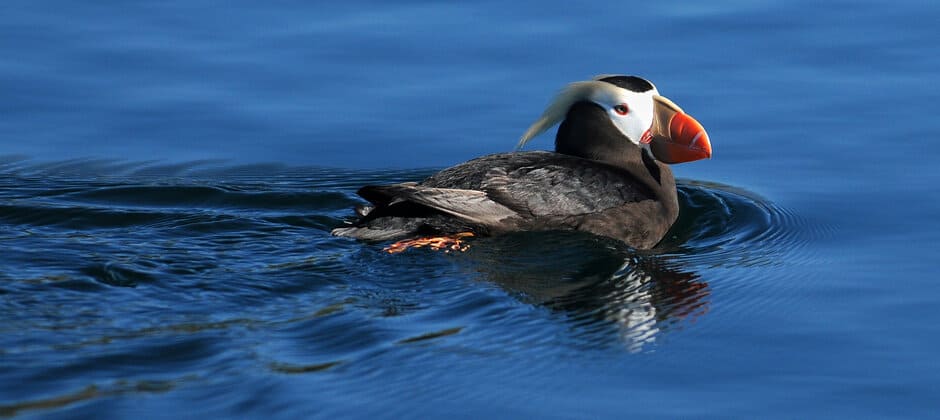Share this article
USFWS declines to list tufted puffin and ptarmigan
The U.S. Fish and Wildlife Service has declined to list both the tufted puffin (Fratercula cirrhata) and the southern white-tailed ptarmigan (Lagopus leucura altipetens) under the Endangered Species Act.
The decision not to list the tufted puffin came in response to a 2014 petition from the Natural Resources Defense Council, asking that the tufted puffin be listed either as a species or a distinct population segment (DPS) in the contiguous United States.
Tufted puffins nest along the coasts of California, Oregon, Washington and Alaska in the U.S., as well as in Japan, Russia and British Columbia, Canada. The U.S. population makes up about 82% of the global population, with most of the birds nesting in Alaska. A species status assessment completed earlier this year by the USFWS indicated that the global population of tufted puffins numbered about 3 million in 2002. Since then, populations in Japan, Washington, Oregon and British Columbia have declined. In Alaskan, some populations have declined, while others have seen increased nesting.
In response to the 2014 petition, the USFWS issued a 90-day finding in 2015, indicating that listing may be warranted — although that finding did not indicate whether it was warranted range-wide for the species, or as a distinct population segment. Last week’s announcement serves as the 12-month finding, concluding that, “while the tufted puffin’s range will likely continue to contract in the south due to climate change, models predict the species will continue to remain widely distributed throughout most of its historical range.”
The USFWS also declined to list the southern population of white-tailed ptarmigan, a grouse found in the alpine regions of Colorado and New Mexico. In 2010, the Center for Biological Diversity petitioned the USFWS, asking that the agency list either the U.S. population or the Rocky Mountain population of the white-tailed ptarmigan as threatened or endangered distinct population segments due to threats of climate change and related habitat loss. After discussion with the USFWS regarding taxonomy, the CBD amended that petition to request the listing of the southern white-tailed ptarmigan (L. l. altipetens) and the Mt. Rainier white-tailed ptarmigan (L. l. Rainierensis).
In 2012, the USFWS determined that listing could be warranted for both subspecies. Last week’s decision constitutes the 12-month finding on the petition for the southern white-tailed ptarmigan. The finding for the Mt. Rainier white-tailed ptarmigan will be released at a future date. The agency determined that the southern white-tailed ptarmigan’s current risk of extinction is low, despite possible climate-related habitat loss, and therefore listing is not warranted.
Read TWS’ Position Statement on The U.S. Endangered Species Act
Header Image: The U.S. Fish and Wildlife Service has declined to list both tufted puffins and white-tailed ptarmigan under the Endangered Species Act. Credit: Peter Davis/USFWS








